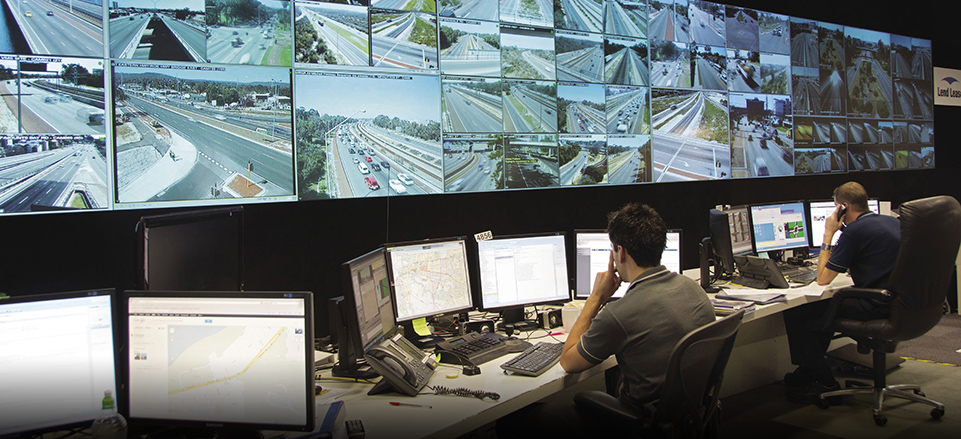
Road Management
PROVIDING RELIABLE AND EFFICIENT MOVEMENT OF PEOPLE AND GOODS
This program seeks to optimise real-time management of the network, provide traveller information, improve asset management planning, and to support service delivery.

Key Performance Indicators
| 2012 Target | 2012 Actual | Result | Ref | |||
| % Community satisfaction with Main Roads | 90 | 95 |
|
112 | ||
|
Network configuration (% of travel that occurs on roads meeting Main Roads AMP Investigatory Criteria) |
Roads | 90 | 89 |
|
112 | |
| Bridges | Strength | 95 | 95 |
|
112 | |
Note: Road Efficiency and Road Management both contribute to the outcome of “Providing reliable and efficient movement of people and goods” and so share some key indicators.
Introduction
The Road Management Program covers activities associated with the management and operations of the road network including providing technical advice about the road network that cannot be allocated to a specific road project. It includes achievements of the State's Traffic Operations Centre, Road Safety Support, Heavy Vehicle Operations and Planning and Technical Services. Some of the key projects and research activities delivered through the program are outlined below.
Traffic Operations and Services Achievements
Intelligent Transport Systems – Enhancing Perth's Freeways
We have continued to roll-out Intelligent Transport Systems (ITS) aimed at providing new opportunities to manage congestion and reduce road crashes and the environmental impacts of transport. The continued deployment of foundation Intelligent Transport Systems will enable real-time traffic monitoring, incident management, traveller information and congestion management on Perth's freeways. Some of the foundation ITS, delivered through the Efficiency Program, and other initiatives implemented over the past year include:
- 12 additional CCTV Cameras installed, providing real time vision of the road network and assisting with Incident Response Management
- 24 Web Cameras installed on Freeways to allow the public to view traffic conditions online
- Roe Highway ITS expansion: 16 kilometres of fibre optic cable added from Orrong Road to Great Northern Highway
- Tonkin Highway ITS expansion: 4.5 kilometres of conduit and pits installed to cater for fibre optic cable along Reid Highway to Great Eastern Highway.
Road Safety Support Services Achievements
All details of our Road Safety policy and guidelines, along with a range of safety tools and information that may be of use to practitioners and the community, are available on our website. Below is an update to some of our initiatives this year:
Road Safety Strategy 2011-15
'To eliminate death and serious injury crashes on the Western Australian road network.' This is the vision of Main Roads Road Safety Strategy – The Road Toward Zero, which embeds the 'Safe System' approach across the organisation and road sector. The Road Safety Strategy and its principles have been disseminated as part of the annual regional training/workshops on Road Safety Auditing, Crash Investigation and Traffic Management.
Fatal Crash Investigations
A total of 135 preliminary fatal crash investigations were undertaken over the past year. In addition, 44 comprehensive full reports have been completed in circumstances where the road may have contributed to the crash. The road improvements identified during the assessments are collated into a Corrective Action Report and sent to the relevant Asset Managers for their action.
Crash Analysis Reporting System
The 'Crash Analysis Reporting System' (CARS) is a new web based application for the analysis of crash data and Benefit Cost Ratio (BCR) calculations. The program which has replaced the old 'CRASHtool' system was launched in conjunction with the new 'Web Reporting Centre' earlier this year, and training is currently being held at regional forums for Main Roads staff, Local Government and contractors, across the state.
Heavy Vehicle Operations Achievements
We are responsible for the regulation of road network access for vehicles in excess of 19 metres in length, 4.3 metres in height, 2.5 metres in width or 42.5 tonnes gross mass. These are known as restricted access vehicles. We regulate, through the issue of permits and notices and the movement of restricted access vehicles on the Western Australian road network in accordance with State and National legislation. Responsibilities also include balancing Government policy objectives for road safety, transport efficiency for State economic benefits, community amenity and preservation of road assets. The following are some of the initiatives that have been undertaken by our Heavy Vehicle Operations area:
Accreditation
WA Heavy Vehicle Accreditation (HVA) consists of two module standards – Maintenance and Fatigue Management. Restricted Access Vehicle operators need to comply with these standards in order to satisfy WA HVA requirements. Every year Restricted Access Vehicle operators are audited by a certified HVA Auditor to make sure they comply with the required standards for Maintenance and Fatigue Management. Records and documentation for nominated Restricted Access Vehicles and Commercial Vehicle drivers involved in the WA HVA scheme are items that are required to be audited.
We have more than 4,000 accredited operators under the current system and to monitor operator compliance, Main Roads Accreditation Officers and a panel consisting of two external RABQSA Certified Auditors conduct the audits. During the year, 220 Random Audits were conducted, exceeding our target of 207 audits.
Compliance
We are responsible for monitoring and improving upon the heavy vehicle compliance outcomes of road safety and infrastructure protection; minimising the adverse impact of road transport on the community; and reducing unfair competitive advantage within the transport industry. A key commitment has been the move towards a more strategic approach to compliance enforcement based on intelligence gathering and targeted enforcement in areas where indicators show there is a higher percentage of non-compliant activity. A program of continual improvement through greater utilisation of technology is enabling a more efficient use of resources and improved on-road practices.
Permits
Restricted access vehicles must obtain permits to operate on the State's road network. Each permit will outline the type of vehicle allowed to use it and its operating conditions. There are currently in excess of
20 permit products available to operators including oversize, product specific and extra mass permits. Across these products we issued just over 35,000 permits last year. The current movement of over-size and over-mass items has generated an increase in the number of complex permit assessments. Permits are now delivered through a new Restricted Access Vehicle System.
Restricted Access Vehicle System Update
The Restricted Access Vehicle System (RAVS) was launched in June 2012 completing Stage One of its development. With an improved look and feel to the application, we were able to realise the immediate benefits of automated letter preparation and storage into our document storage system. The introduction of the application will enable improvements in the accuracy and quality of data being captured, consistency in the content of correspondence, and more importantly, improved turnaround time in preparing and distributing Permits and reminder notices for our customers.
The next stage of the project is a web-based online Permit component where customers will be able to prepare, submit and pay for their Permit applications. The initial release of that stage is planned for December 2012.
Planning and Technical Services Achievements
Bridge Management System
The Bridge Management System (BMS) is a central system to capture and store bridge related data. The BMS will assist in asset management by providing information on bridge condition and configuration. Maintenance and upgrades can then occur in a consistent, transparent and informed manner.
Phase One of the Program Management Module was released in September 2011 for regional Asset Managers (Structures). The BMS enabled managers to prepare their annual work program in an agreed, consistent format and is being used to prepare future works. Phase Two is currently under development and will track approvals and assist with bridge asset management processes through to project delivery phase.
Work has started on the development of a Route Selector and Period Permits module. Due for completion in December 2012, the efficiency of the assessment and approval process for Period Permits, as reviewed by Structures Engineering, will be improved.
Emerging Surveying Technologies
As a result of being continuously proactive in testing new surveying technologies and techniques, survey work on a section of Mitchell Freeway between Hepburn Avenue and Hodges Drive won the 2012 WA Spatial Sciences Excellence Awards. Utilising the Mobile Light Detection and Ranging System Scanning Technology, Main Roads worked with McMullen Nolan group to survey the freeway carriageways without a single surveyor present. This meant that survey work had no impact on traffic flow and significantly reduced safety issues to both surveyors and road users. Data capture for 15 kilometres of the targeted area was completed in just one day, a significant improvement from using conventional data collection methods which take three weeks to complete. This new technique saves substantial time, money, traffic management and manpower.
Clever Road Designs
As part of the Graham Farmer Freeway Tunnel/Mitchell Freeway widening project, a new freeway on-ramp will be constructed from an existing freeway off-ramp. By using existing road geometry and structures, this low-cost, easy to build solution maximises the use of existing infrastructure and requires no major clearing. The new slip lane will make better use of the underutilised left-hand lane on the Mitchell Freeway northbound and will facilitate motorists wishing to exit the Freeway at Vincent or Powis Streets. The concepts underpinning this solution can potentially be used in other urban road networks.

Transport Inspectors on the job
Looking Ahead
- Finalising an Over-Size, Over-Mass Unit at HVO to provide the vehicle industry with a centralised point of contact for processing applications and approvals required to conduct over-size, over-mass movements.
- Drafting a Brownfields Road Design Guide to provide guidance on how best to improve existing road geometry in stages when funding for complete construction is not provided all at once.
- Preparing an interactive training package to ensure graduates rotating in Road Traffic Engineering are exposed to the principles of road design.
- Providing Active Traffic Management in the CBD area and Freeways' connections through a new traffic Incident Response Service, additional CCTV monitoring and parking management.
- Increasing cycling opportunities by developing key links in the Principal Shared Path Network.

 previous page
previous page
 previous page
previous page
